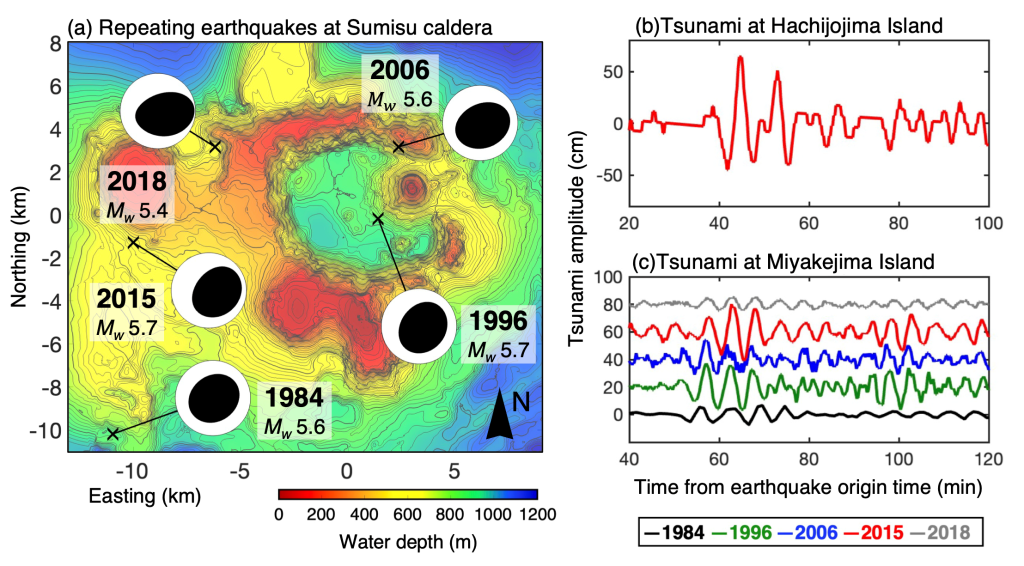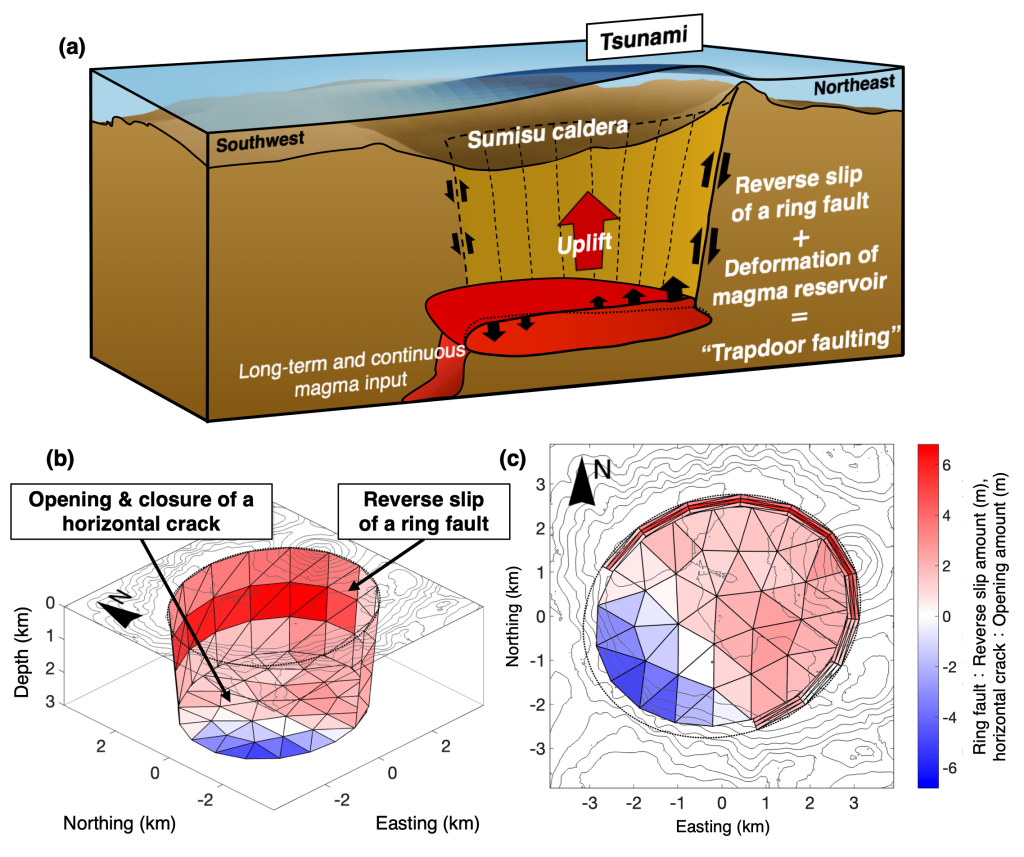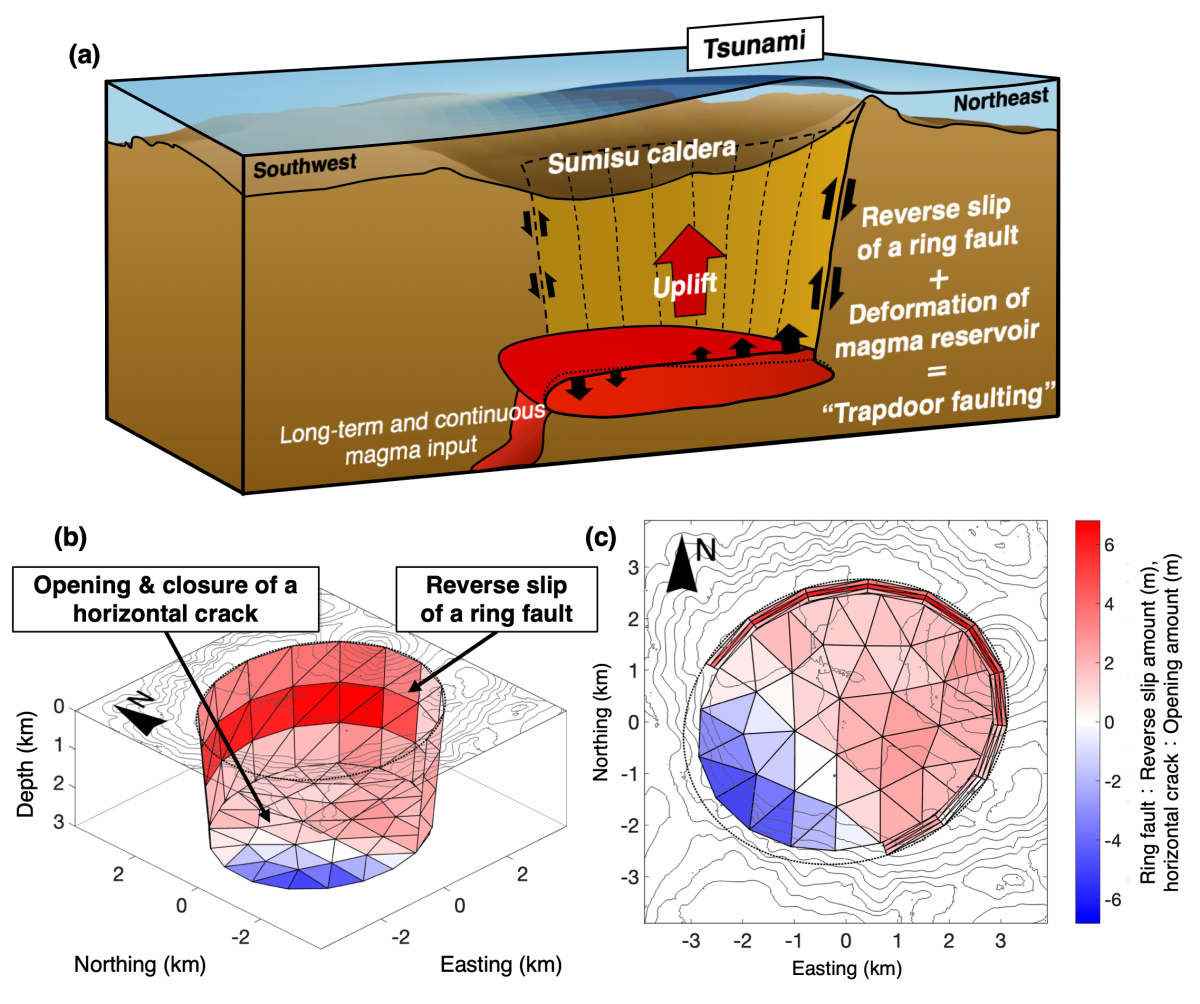Osamu Sandanbata1,2・Shingo Watada1・Kenji Satake1・Hiroo Kanamori3・Luis Rivera4・Zhongwen Zhan3
1. Earthquake Research Institute, the University of Tokyo, Japan.
2. National Research Institute for Earth Science and Disaster Resilience, Japan.
3. California Institute of Technology, USA.
4. University of Strasbourg, France
Sub-decadal volcanic tsunamis due to submarine trapdoor faulting at Sumisu caldera in the Izu–Bonin Arc. Journal of Geophysical Research: Solid Earth, 127, e2022JB024213.
https://doi.org/10.1029/2022JB024213
Tsunamis are mainly caused by large submarine earthquakes, but submarine volcanic processes can also trigger tsunamis. Peculiar moderate-sized volcanic earthquakes with a seismic magnitude of Mw < 6 took place every decade in a submarine volcano called Sumisu caldera, south of Japan, and generated tsunami waves (Figure 1). Despite the moderate earthquake size, the maximum wave heights of the tsunamis were about a meter, which has made it challenging to forecast tsunamis based on earthquake observations. Their source mechanism has been controversial for the last four decades since the first recognition of the earthquake and tsunami in 1984.
In this study, we analyzed tsunami and seismic data from a recent earthquake that took place on May 3, 2015 (JST). As results, we showed that the submarine Sumisu caldera caused brittle rupture of its intra-caldera fault system every decade, due to overpressure of magma accumulating in a shallow horizontal crack (Figure 2a). This so-called “trapdoor faulting” mechanism abruptly uplifted its caldera floor by meters and excited large tsunamis. Our trapdoor faulting model (Figure 2b–c) explained the tsunami and seismic waveform data well. We also revealed that the complex source mechanism that occurred at a very shallow depth of < ~3 km can efficiently cause tsunamis without significant seismic wave radiations.
Our study revealed, for the first time, the occurrence of trapdoor faulting under the ocean and its high potential for tsunami generation. This finding underscores our needs to examine/monitor such submarine calderas for assessing volcanic tsunami hazards. Additionally, the decadal recurrence of trapdoor faulting reflects active volcanism of the submarine caldera, strongly suggesting its potential for submarine eruptions in the future.




